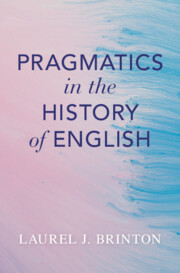This article deals with the mechanisms that language users employ in historical periods to represent spoken language in writing. I focus on a set of features known as speech descriptors, which allow users to combine representation and evaluation of the speech (and, possibly, of the speaker), such as most disgusting in ‘he used most disgusting language’. The study shows that such speech descriptors in combination with the lemma language are used for a number of sociopragmatic purposes in the Old Bailey Corpus which includes legal materials, especially testimony, from 1720 to 1913. The descriptors can be used to avoid having to repeat a more specific, and possibly offensive and socially or morally inappropriate utterance; they can be used to put the spotlight on the evaluation and impact of the wording rather than the original speech itself; and they can help users mitigate, deflect, or disprove an accusation or guilt. Overall, the article demonstrates that studying the speech of the past must necessarily involve investigating the complex choices made by language users in terms of what to represent, what means to use to represent the speech, and how they evaluate the speech (and speaker).


